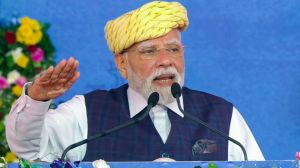Prayers, silence across Indian Ocean
Mourners from across the world wept, prayed and observed moments of silence along ravaged Indian Ocean coastlines on Monday to remember thos...

Mourners from across the world wept, prayed and observed moments of silence along ravaged Indian Ocean coastlines on Monday to remember those killed by one of nature’s deadliest episodes.
A year after the Indian Ocean tsunami, a huge recovery operation has brought hope to hundreds of thousands of survivors. But the sorrow, pain and trauma remain strong—along with fears that monster waves could come again.
“We are in fear,” said 19-year-old Kanagalingan Janenthra in Sri Lanka’s eastern town of Batticaloa. “Some of us think it might come again.”
About 230,000 people were killed or disappeared in 13 Indian Ocean countries, nearly three quarters of them in Indonesia’s Aceh province on the northern tip of Sumatra, according to tallies made by individual countries.
In Aceh, Indonesian President Susilo Bambang Yudhoyono set off a siren at 8:16 a.m. to begin a minute of silence.
“It was under the same blue sky exactly a year ago that Mother Earth unleashed the most destructive power among us,” Yudhoyono said in a flattened coastal suburb of the capital Banda Aceh.
A 9.15 magnitude earthquake, which lasted eight minutes, set off waves 10 metres high that smashed into shorelines as far away as East Africa, erasing entire towns and villages off beaches. A year later, four out of five of the two million people displaced are still living in tents, temporary shelters or piled in with family and friends across the region.
After a much criticised slow start to reconstruction, officials and aid groups say a big chunk of the $13.6 billion in pledged donations—the most generously funded humanitarian effort in history—will be deployed for reconstruction projects starting next year.
The toll has been difficult to pin down because countries are still trying to update figures and populations of affected communities were not always accurately recorded.
Some women cling desperately to a hope their children will be found.
“In my heart, I still believe they are alive,” said Yasrati, 38, who placed smiling photos of her 13-year-old daughter and 5-year-old son in a local newspaper.
Thai Prime Minister Thaksin Shinawatra laid a foundation stone for a memorial at Khao Lak, a beach resort in southern Thailand where many foreigners died. Swedes waded up to their necks into the sea to launch floating wreaths after singing the ABBA hit, I Have A Dream.
In Sri Lanka’s southern town of Peraliya, Hindu, Christian, Buddhist and Muslim priests chanted blessings at the site where 1,000 people died when their train was bowled over by the tsunami. Sri Lankan President Mahinda Rajapakse oversaw two minutes’ silence and placed a wreath at a wave-shaped memorial for the 35,000 who died in the tsunami.
Indonesia tested a tsunami warning system for the first time on Monday, sounding warning sirens on a beach in the West Sumatra town of Padang. Officials urged residents to run along organised evacuation routes. —Reuters
Photos



- 01
- 02
- 03
- 04
- 05




























